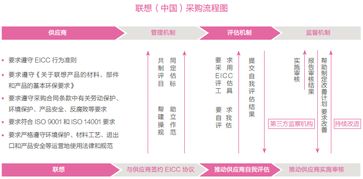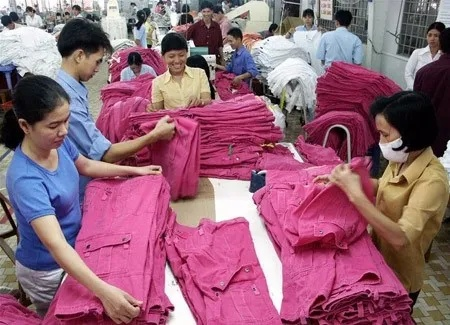The Future of Textiles:Exploring Nanotechnology in Nano-textiles
In the rapidly evolving textile industry, the integration of nanotechnology presents a promising future for the development of nano-textiles. By harnessing the unique properties of nanomaterials such as their high surface area and conductivity, nano-textiles have the potential to revolutionize the way we produce clothing, from sports apparel to everyday wear. This paper explores how nano-textiles can be engineered with the aid of nanotechnology, highlighting its potential in enhancing comfort, durability, and functionality. Recent advancements in nanofabrication techniques offer new opportunities for tailoring the structure and properties of these fabrics, making them more sustainable, eco-friendly, and efficient in terms of energy consumption and waste management. The exploration of this technology is not only crucial for improving the quality of textile products but also holds significant potential for creating new materials and applications that cater to the needs of an ever-growing global population.

I. Introduction to N-Textiles
Nano-textiles are a fascinating frontier in the realm of textiles that leverage the power of nanotechnology to enhance their functionality, sustainability, and performance. At the heart of this innovative fabric technology lies the concept of using tiny materials—ranging from nanoparticles to nanotubes—to create new textures, colors, and properties. In this presentation, we'll delve into the fundamentals of nano-textiles and explore how they are revolutionizing the fashion industry, healthcare, and beyond.
II. Key Features of Nano-textiles
Nano-textiles possess unique features that make them stand out from traditional textiles. Here are a few key ones that you should be aware of:
-
Tactile Properties: Nano-textiles can provide a different kind of touch than their non-nano counterparts. For instance, nanocomposite yarns may offer a smoother or rougher surface, depending on the type of nanomaterial used.
-
Coloration Techniques: Nanoparticles can be embedded into the fibers to give them vibrant, long-lasting color. This is particularly useful for creating eco-friendly, water-resistant textiles that don't fade over time.
-
Energy Efficiency: Nano-textiles have an inherently higher level of energy efficiency due to the reduced thickness of the fibers. This means they can trap less air, leading to faster wicking, which could help with thermal management.
-
Biodegradability: Many types of nano-textiles are biodegradable, making them environmentally friendly and reducing waste in landfills.
-
Enhanced Durability: Nano-additives can increase the resilience of textiles against wear and tear. For example, nanoparticles can improve the strength and flexibility of knitted fabrics.
-
Antimicrobial Properties: Some nano-textiles have been engineered to resist bacteria growth, which can be useful in medical applications.
These are just a few examples of the many benefits that nano-textiles offer. As you'll see in our case study, there are numerous ways in which these technologies are being implemented across various industries.
III. Case Studies of Nano-Textiles
Now let's dive into some real-world examples of how nano-textiles are transforming industries. We'll start with healthcare, where nano-textiles can be used to develop more comfortable, durable, and effective medical devices. Next, we'll look at how nano-textiles are revolutionizing sustainable fashion by creating more eco-friendly materials. Finally, we'll explore how nano-textiles are improving the quality of life for individuals with allergies or other health issues through innovative solutions such as antimicrobial clothing.
IV. Emerging Applications of Nano-textiles
As nano-textile technology advances, we can expect to see even more exciting developments. Here are some potential areas where nano-textiles could have an impact in the future:
-
Smart Textiles: With the advent of wearable technology, nano-textiles could be incorporated into smart garments that respond to body temperature changes or detect specific physiological signals.
-
Renewable Energy Storage: Nano-textiles can potentially be used to store solar energy or generate electrical power directly from the body's own metabolic activity.

-
Environmental Monitoring: Wearable nano-sensors integrated into textiles could monitor environmental factors such as temperature, humidity, or pollutants in real-time and alert users of potential hazards.
-
Biomedical Implants: Nanoparticle-based implants could be developed to repair damaged tissues or replace lost organs.
V. Challenges and Future Directions
While nano-textiles hold great promise, there are still some challenges to overcome before they fully realize their full potential. These include issues related to cost, scalability, regulatory approvals, and consumer awareness. Additionally, the long-term effects of exposure to certain nanomaterials remain uncertain, so careful consideration must be given to their use in textile products.
VI. Conclusion
The future of nano-textiles is bright, and it promises to bring about unprecedented advancements in textile technology. From enhancing our ability to perform daily tasks to improving our overall wellbeing, the possibilities are endless. As we look ahead, it's clear that investing in research and development in this field will be critical to realizing its full potential. So let's embrace the innovation that nano-textiles represent and continue to push the boundaries of what's possible when it comes to textiles and textile engineering.
纳米纺织品介绍
封面
纳米纺织品:前沿科技与未来纺织的融合
目录
-
纳米纺织品的定义与特性
-
纳米纺织品的制备工艺
-
纳米纺织品的应用领域
-
案例分析:纳米纺织品的应用实例
-
图表补充说明
纳米纺织品的定义与特性

-
纳米纺织品的定义 纳米纺织品是一种新型的纺织材料,其尺寸通常在纳米级别,具有超高的细度和强度,它们通过先进的纳米技术制造,具有出色的透气性、吸湿性、防菌防霉等功能。
-
纳米纺织品的特性 纳米纺织品的特性包括高强度、高透气性、低密度、环保可持续性等,它们能够满足现代人们对舒适、健康和环保的需求,由于纳米技术的运用,纳米纺织品还具有优异的耐久性和抗老化性能。
纳米纺织品的制备工艺
-
纳米材料的制备方法 纳米材料的制备方法主要包括物理气相沉积法、化学气相沉积法等,这些方法能够精确控制纳米材料的尺寸和分布,从而保证产品的质量和性能。
-
纺织纤维的加工工艺 纳米纺织品的制备还需要特殊的加工工艺,包括纺丝、织造、染整等步骤,这些步骤需要严格控制温度、湿度、压力等参数,以确保纤维的形状和尺寸符合要求,还需要采用环保可持续的材料和技术,确保产品的环保性和可持续性。
纳米纺织品的应用领域
-
服装领域:纳米纺织品具有出色的透气性和吸湿性,能够满足人们在炎热夏季和湿润环境下的穿着需求,它们还具有抗菌防霉等功能,能够提高穿着舒适度和健康度,纳米纺织品还可以用于制作高端定制服装,满足人们对个性化、高品质服装的需求。
-
家居用品领域:纳米纺织品可以用于制作窗帘、床单、地毯等家居用品,它们具有环保可持续性,能够满足人们对绿色家居的需求,由于它们的超强吸湿性和透气性,还能够提高家居用品的使用寿命和舒适度。
-
医疗领域:纳米纺织品可以用于制作医用口罩、手套、敷料等医疗用品,它们具有优秀的抗菌防霉性能,能够提高医疗用品的安全性和有效性,纳米纺织品还可以用于制作生物材料,用于医疗器械和药物缓释等领域。
案例分析:纳米纺织品的应用实例
-
苹果公司推出纳米纤维面料:苹果公司近年来推出了多种采用纳米纤维面料的服装和家居用品,如苹果新款运动鞋和床上用品等,这些产品不仅具有出色的透气性和吸湿性,还具有环保可持续性,受到了消费者的热烈欢迎。
-
生物医用领域的应用:纳米纺织品在生物医用领域也有着广泛的应用,用于制作医疗器械的生物材料、药物缓释材料等,这些材料具有优秀的抗菌防霉性能和生物相容性,能够提高医疗用品的安全性和有效性。
图表补充说明
以下是一些图表补充说明:
图表1:纳米纺织品的制备工艺流程图
图表2:不同应用领域的纳米纺织品产品示例图 我们可以更好地了解纳米纺织品的特点和应用领域,希望对您的PPT制作有所帮助。
Articles related to the knowledge points of this article:
Top Ten Textile Brands in the Rankings
The Global Fabrics of Innovation:An Interview with Guo Fan Textiles
The Price Dynamics of Lavender Textile Products:A Comprehensive Look



